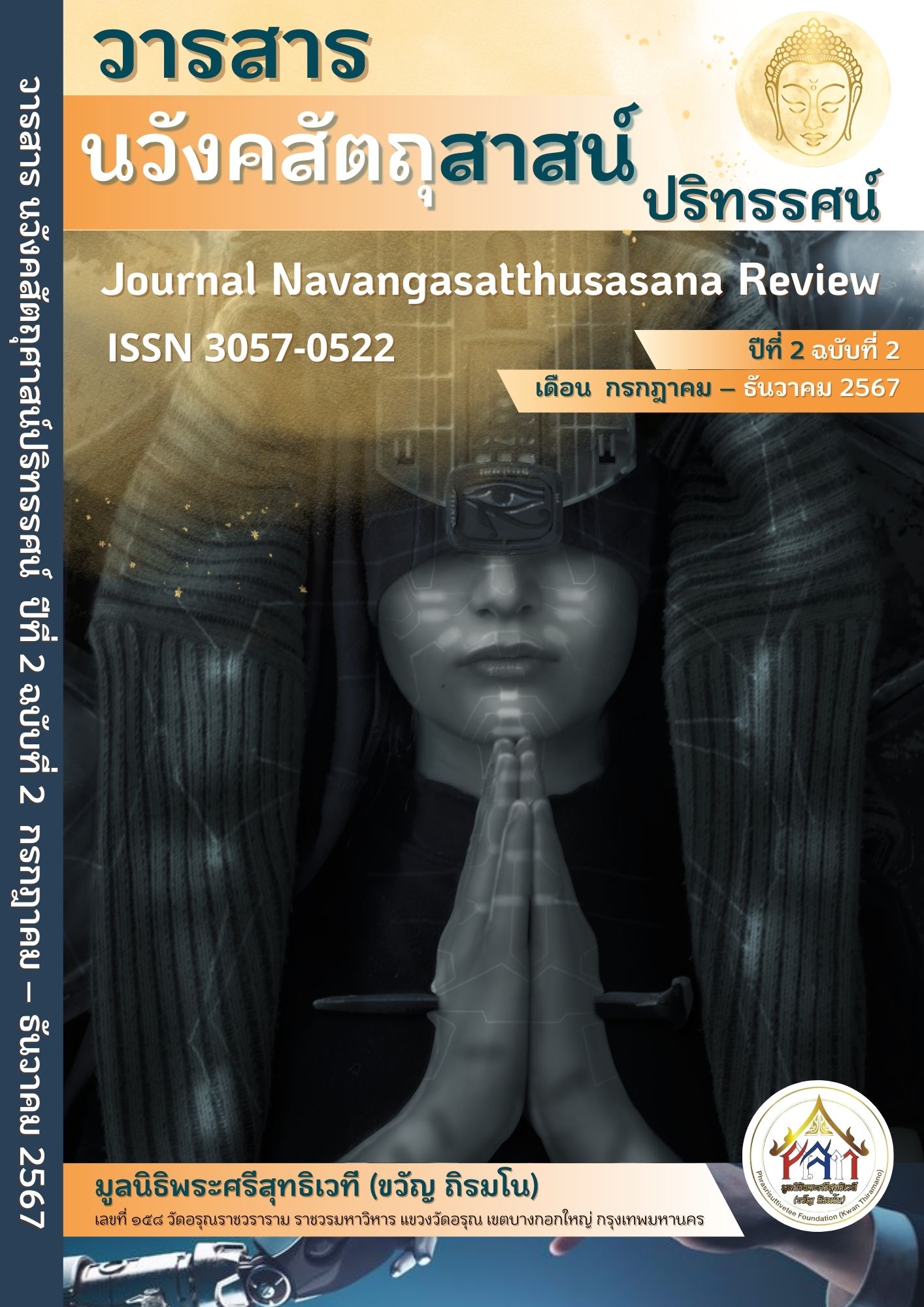A Review of Paṭiccasamuppāda Circle in Buddhist Perspectives Doctor of Buddhist Studies Program, Mahachulalongkornrajavidyalaya University
Main Article Content
Abstract
This academic article aims to show that Paṭiccasamuppāda or the co-occurrence of the 12 Dhammas, namely ignorance, mental formations, consciousness, name and forms, six sensual bases, sensation, feeling, craving, attachment, being, old age and death, which are related. This Paṭiccasamuppāda contains both risen way and extinguished way. The risen way starts with ignorance as a factor in Saṅkhāra which later causes the rise of consciousness, consciousness causes the rise of name and forms, name and form cause the rise of six sensual organs, the six sensual organs causes the rise of contacts, the contacts causes the rise of feeling, feeling causes the rise of desire, the desire causes the rise of attachment, the attachment causes the rise of being, being causes the rise of birth, the birth causes the old age and death and old age and death cause the rise of sorrows, lamentation, suffering, sadness and distress, thus the whole suffering arises. As for the extinguished line, it extinguished and went reverse. The cycle of Paṭiccasamuppāda that had been continued for a long time was broken. The cycle of life is not continuous, the present life becomes the last birth, the extinguishment of Paṭiccasamuppāda is considered to be the attainment of the highest level of Dhamma in Buddhism, becoming a noble person or Arahant, who will never return to the cycle of death and rebirth anymore.
Article Details

This work is licensed under a Creative Commons Attribution-NonCommercial-NoDerivatives 4.0 International License.
เนื้อหาและข้อมูลในบทความที่ลงตีพิมพ์ในวารสาร นวังคสัตถุสาสน์ปริทรรศน์ถือเป็นข้อคิดเห็นและความรับผิดชอบของผู้เขียนบทความโดยตรงซึ่งกองบรรณาธิการวารสาร ไม่จำเป็นต้องเห็นด้วย หรือร่วมรับผิดชอบใด ๆ บทความ ข้อมูล เนื้อหา รูปภาพ ฯลฯ ที่ได้รับการตีพิมพ์ในวารสาร นวังคสัตถุสาสน์ปริทรรศน์ถือเป็นลิขสิทธิ์ของวารสาร นวังคสัตถุสาสน์ปริทรรศน์หากบุคคลหรือหน่วยงานใดต้องการนำทั้งหมดหรือส่วนหนึ่งส่วนใดไปเผยแพร่ต่อหรือเพื่อกระทำการใด ๆ จะต้องได้รับอนุญาตเป็นลายลักอักษรจากวารสาร นวังคสัตถุสาสน์ปริทรรศน์ก่อนเท่านั้น
References
มหาจุฬาลงกรณราชวิทยาลัย. พระไตรปิฎกภาษาบาลี. ฉบับมหาจุฬาเตปิฏกํ. 2500. กรุงเทพมหานคร :
โรงพิมพ์รุ่งเรืองธรรม, 2506.
__________ . พระไตรปิฎกภาษาไทย ฉบับมหาจุฬาลงกรณราชวิทยาลัย. กรุงเทพมหานคร : โรงพิมพ์
มหาจุฬาลงกรณราชวิทยาลัย, 2539.
__________ . อรรถกถาภาษาบาลี ฉบับมหาจุฬาอฏฺฐกถา. กรุงเทพมหานคร : โรงพิมพ์มหาจุฬาลง
กรณราชวิทยาลัย, โรงพิมพ์วิญญาณ, 2532 - 2534.
ธีรวัส บำเพ็ญบุญบารมี. หลักปฏิบัติพิจารณาปฏิจสมุปบาท. โครงการธรรมศึกษาวิจัย:
มหาวิทยาลัยมหามกุฏราชวิทยาลัย. 2551.
บรรจบ บรรณรุจิ. กระบวนธรรมเพื่อความเข้าใจชีวิตปฏิจจสมุปบาท. กรุงเทพมหานคร: ธรรมสภา.
บรรจบ บรรณรุจิ. ปฏิจจสมุปบาท. กรุงเทพมหานคร: พรบุญการพิมพ์. 2538.
พร รัตนสุวรรณ. พุทธวิทยา เล่ม 1. พิมพ์ครั้งที่ 3. กรุงเทพมหานคร: โรงพิมพ์วิญญาณ. 2537.
พระพรหมคุณาภรณ์ (ป. อ. ปยุตฺโต). พจนานุกรมพุทธศาสน์ ฉบับประมวลศัพท์. พิมพ์ครั้งที่ 17.
กรุงเทพมหานคร: โรงพิมพ์พระพุทธศาสนาของธรรมสภา. 2554.
พระพรหมคุณาภรณ์ (ป.อ.ปยุตฺโต). พุทธธรรม ฉบับปรับปรุงและขยายความ. พิมพ์ครั้งที่ 11.
กรุงเทพมหานคร : โรงพิมพ์มหาจุฬาลงกรณราชวิทยาลัย. 2542.
พุทธทาสภิกขุ. ปฏิจจสมุปบาทจากพระโอษฐ์. พิมพ์ครั้งที่ 9. กรุงเทพมหานคร:โรงพิมพ์ธรรมสภา.
เพิ่ม รัฐไชย. “การศึกษาเชิงวิเคราะห์เรื่องหลักปฏิจจสมุปบาท”. วิทยานิพนธ์อักษรศาสตรมหาบัณฑิต.
บัณฑิตวิทยลัย: จุฬาลงกรณมหาวิทยาลัย. 2522.

